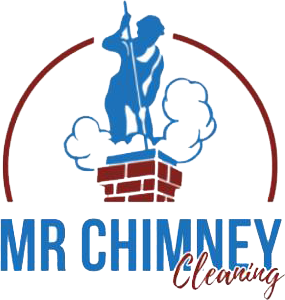Professional Chimney Sweep Cleaning
Don’t wait for accidents to happen. You can prevent this by regular inspections, cleanings, and maintenance. Whether you are using a wood-burning fireplace or a vent system that uses oil or natural gas, regular maintenance and inspection will save you costly repairs in the future.
Even if you seldom use your fireplace, an annual inspection is necessary to ensure it’s in good working condition every time you use it. Plus, regular cleaning keeps unwanted pests and critters from taking residence in your chimney.
How Does Our Chimney Cleaning Process Look Like?
Mr. Chimney Cleaning use different specialized tools to reach every nook and cranny of your chimneys. We have cleaning equipment for chimneys of every shape and size.
Do you have a furnace flue, or perhaps your house has a large masonry fireplace? Even if you have a metal chimney, Mr. Chimney Cleaning has the skills, experience, and equipment to clean or repair it.
We make sure that we remove every piece of debris and every soot or creosote particle without damaging anything. Our professional chimney sweeps will clean even the connector pipes and elbow of your chimney, which is usually difficult without the right tools.
Some of the tools we use include:
How Does Our Chimney Cleaning Process Look Like?
Mr. Chimney Cleaning’s professional services include:
- Chimney inspection
- Chimney cap inspection and cleaning
- Chimney flue inspection and cleaning
- Chimney smoke chamber inspection and cleaning
- Smoke shelf cleaning
- Firebox cleaning and ash removal
- Damper inspection and cleaning
- Debris and creosote removal
Chimney inspection is a necessary step in our chimney cleaning process. We don’t just clean your chimney. We also make sure that any issues and broken parts are fixed and replaced. Failure to address them for a long time can reduce the life of your chimney. It could also worsen the damage over time and lead to costly repairs.
Another reason why we inspect chimneys first before cleaning is when homeowners doesn’t have a regular cleaning and inspection schedule. They might have forgotten the last time they had their chimney cleaned. An inspection will give our technicians an idea of hom much work is to be done.
How Often Should You Get Your Chimney Cleaned?
It depends on how often and how much you use your fireplace. According to the National Fire Protection Association (NFPA), chimneys, vents, and fireplaces should be inspected at least once a year. This ensures that the chimney is still structural sound, the clearances are functioning correctly, and no deposits. They also added that cleaning and maintenance should be done when necessary.
The Chimney Safety Institute of America (CSIA) added that, chimneys should be cleaned when the soot buildup is around 1/8-inch thick. However, if you notice any appearance of glaze in your flue, you need to have it cleaned immediately. However, if you notice any appearance of glaze in your flue, you need to have it cleaned immediately. They further added that any time there is a considerable amount of creosote or soot build up can cause chimney fire that might spread to your house.
Fireplaces that have been used heavily often produce a great deal of creosote and soot. In some cases, some chimneys have 5 gallons of dirt and debris. Removing them before they build up to unsafe levels is essential.
Why Should I Get My Chimney Cleaned?
We can never stress it enough that regular cleaning makes your heating system safe and running properly. It only takes a small amount of creosote buildup for it to become a fire hazard. Creosote is a highly-combustible buildup that comes from burning wood.
It accumulates more buildup if you don’t know how to burn wood properly. It can also happen if your fireplace or stove is not working properly. Each type of wood produces a different type of creosote. For example, pine wood produces creosote buildup much faster than other wood. Thus, you should avoid using it as a wood fuel.



When is the Best Time to Have Your Chimney Cleaned?
The ideal time to have your chimneys and fireplaces cleaned is between spring and early fall. It is necessary to have them inspected and cleaned before the burning seasons — before you start to build a fire.
If you forgot to have your chimney or fireplace cleaned earlier, don’t wait until fall. Call Mr. Chimney Cleaning at 888-912-5512 NOW! We inspect and clean chimneys, vents, and fireplaces no matter what the season is.
